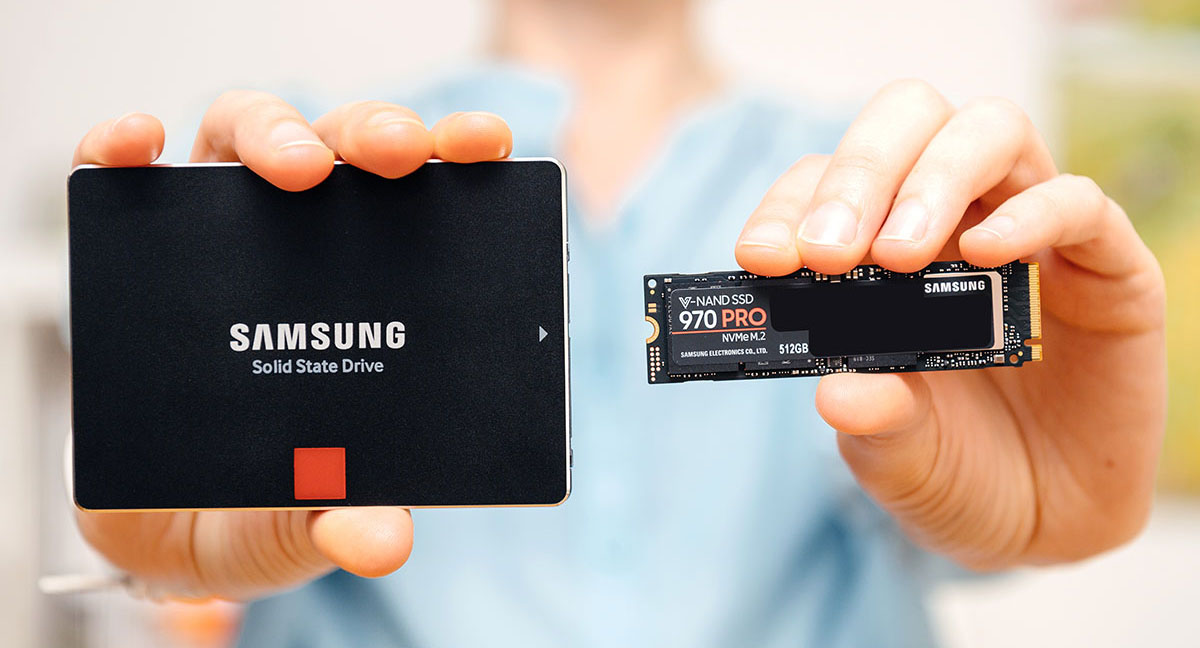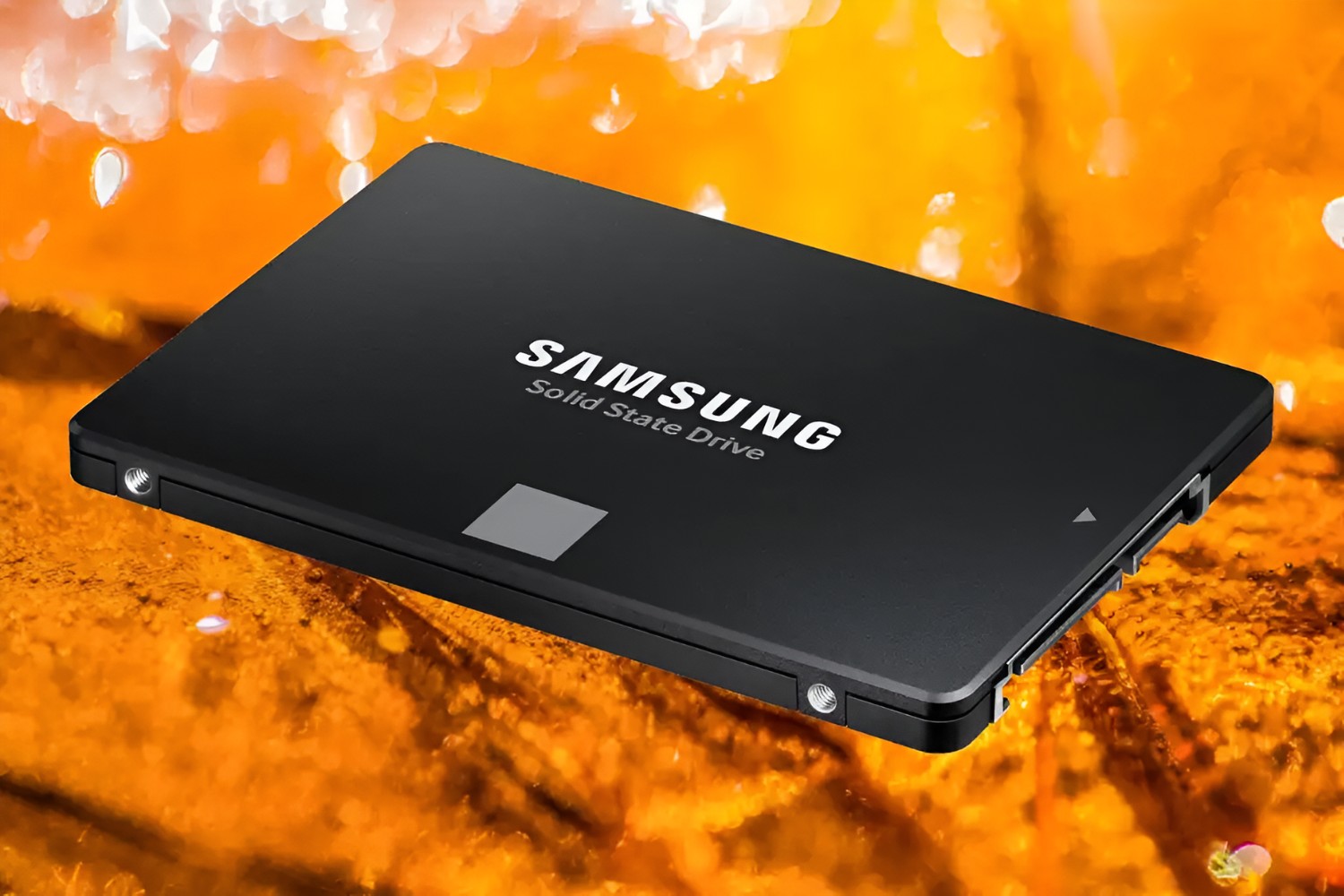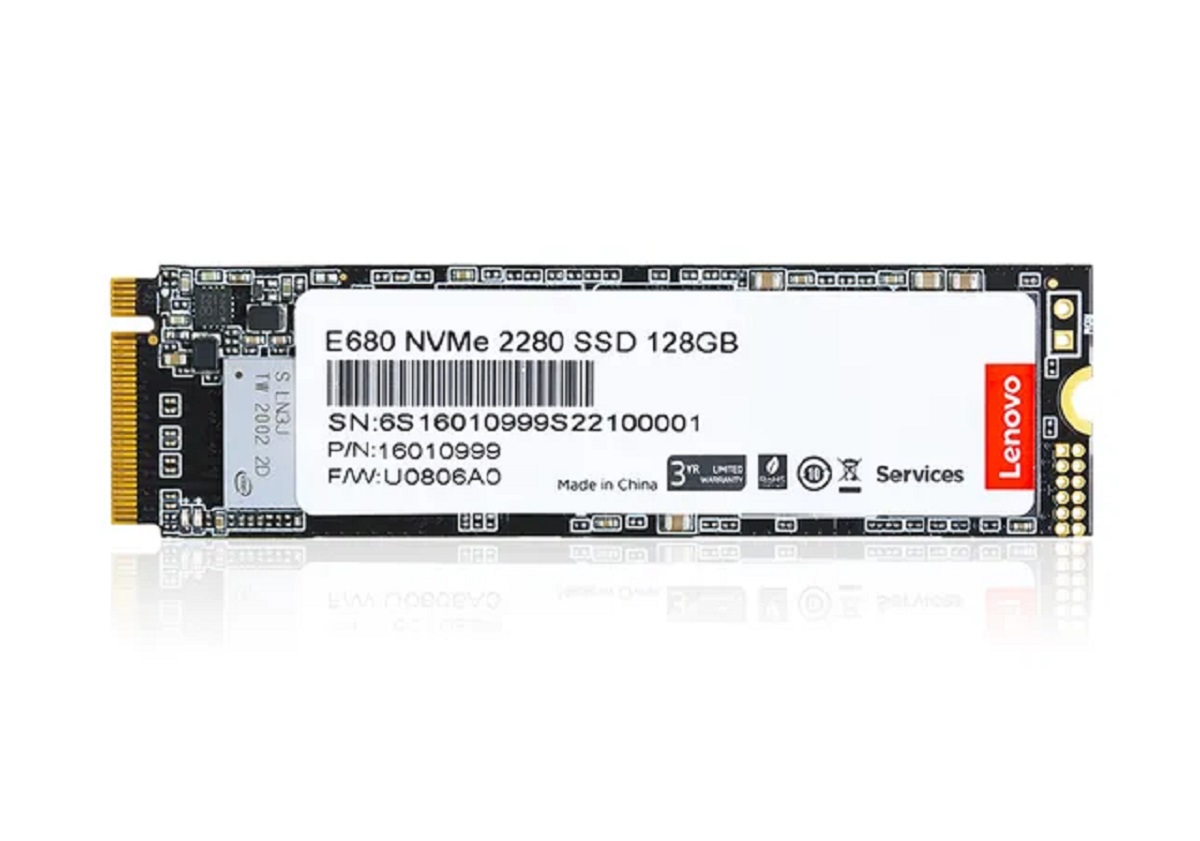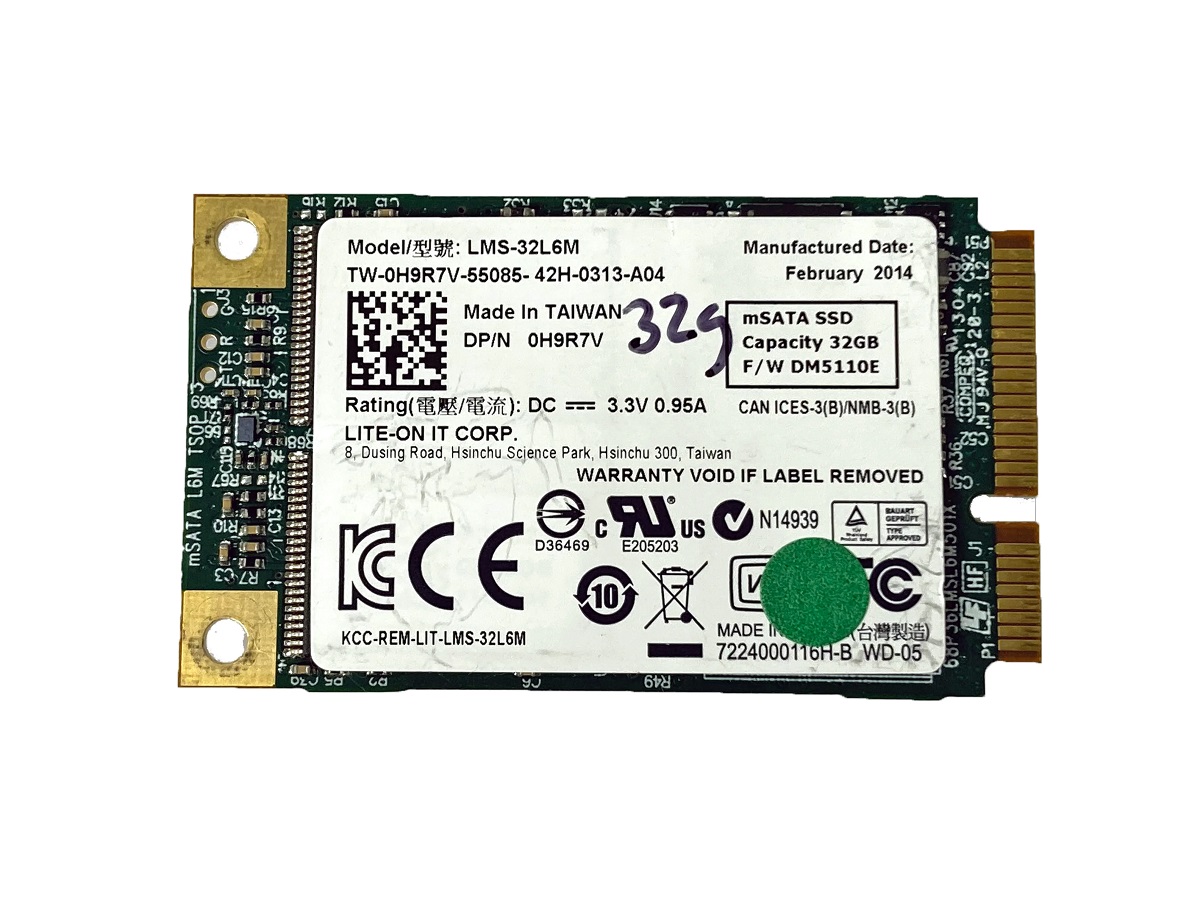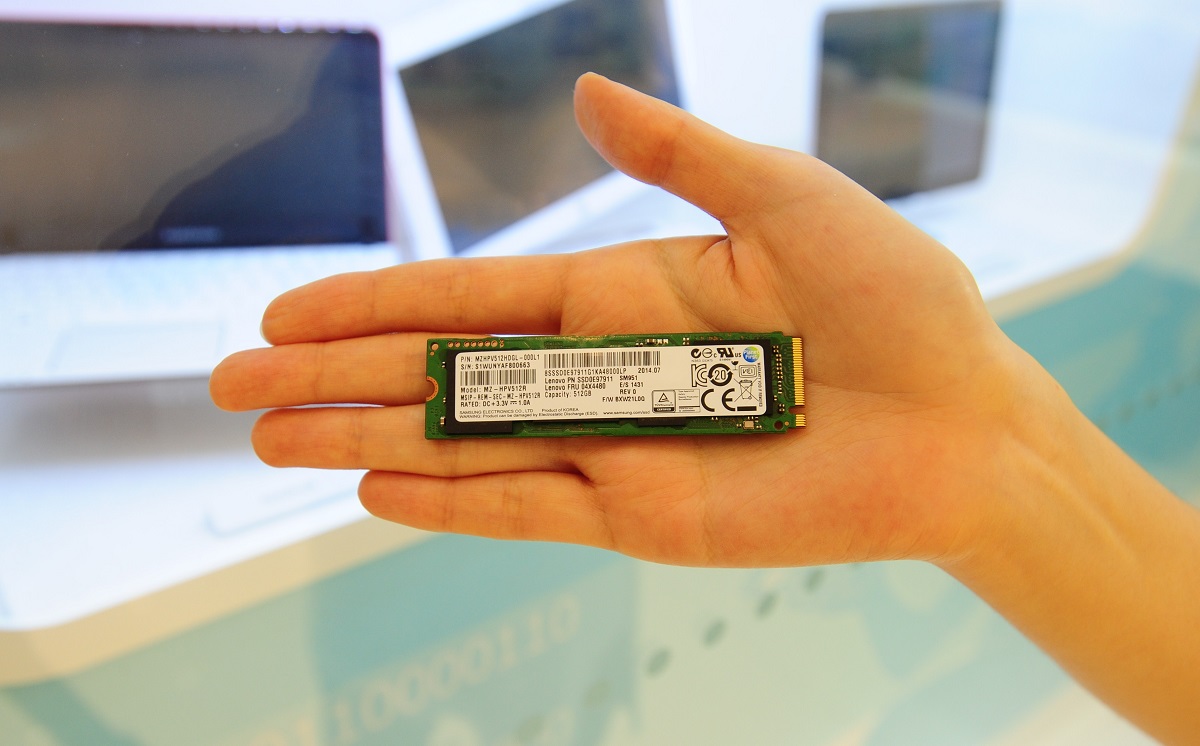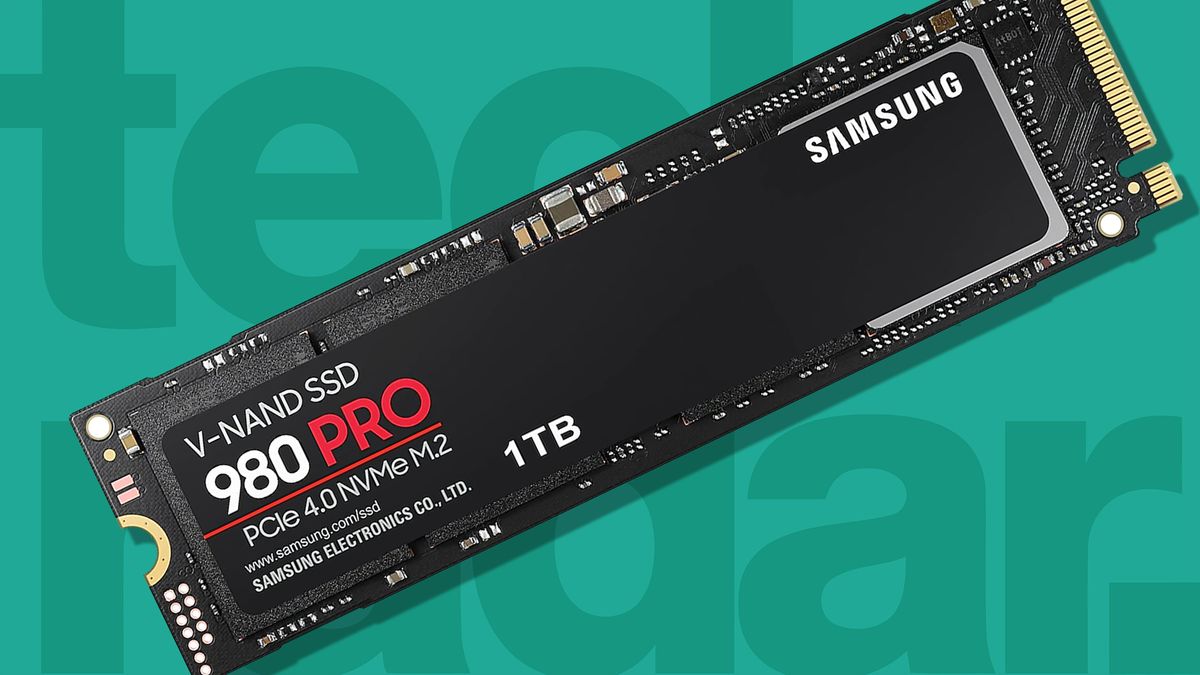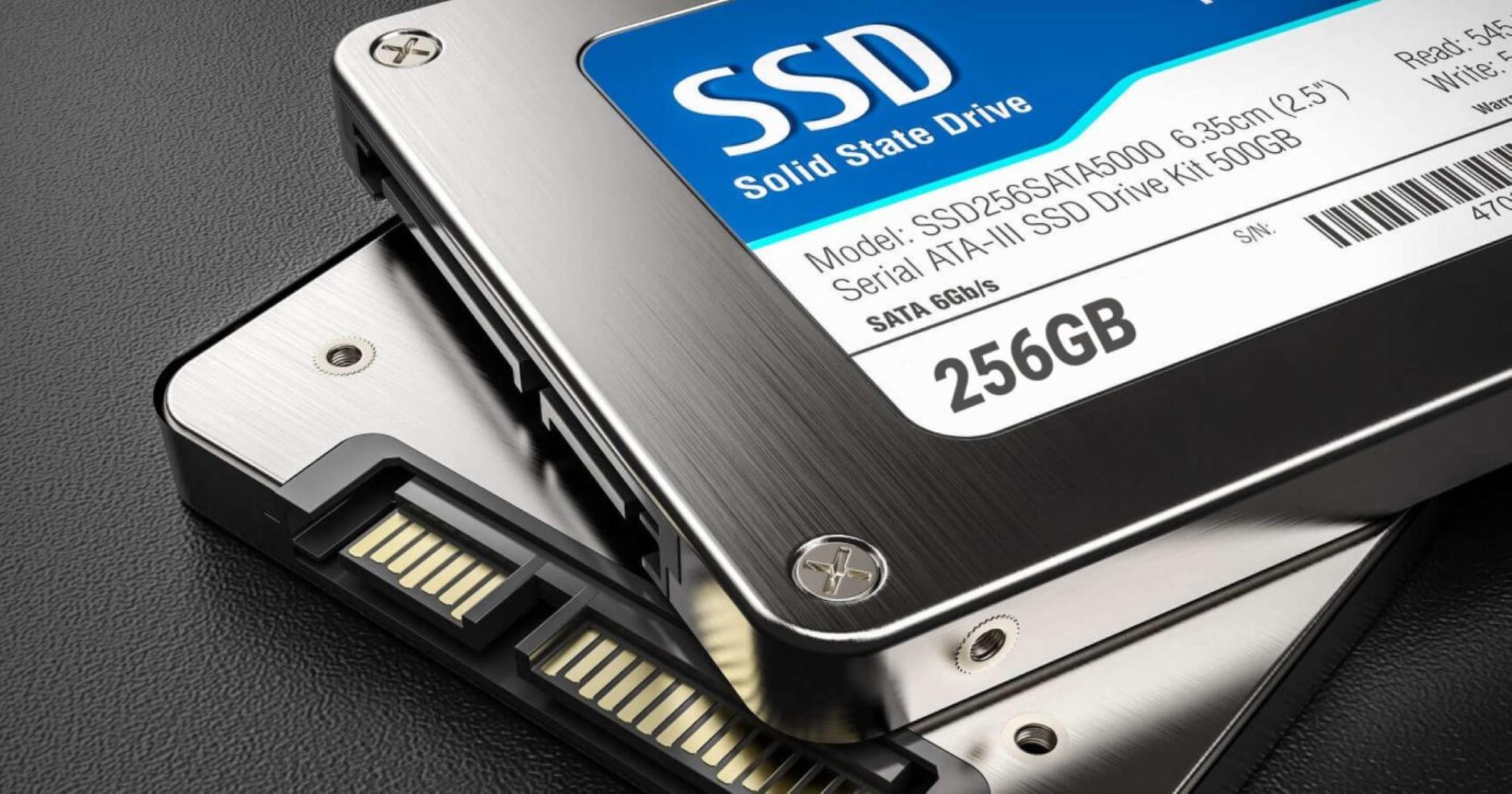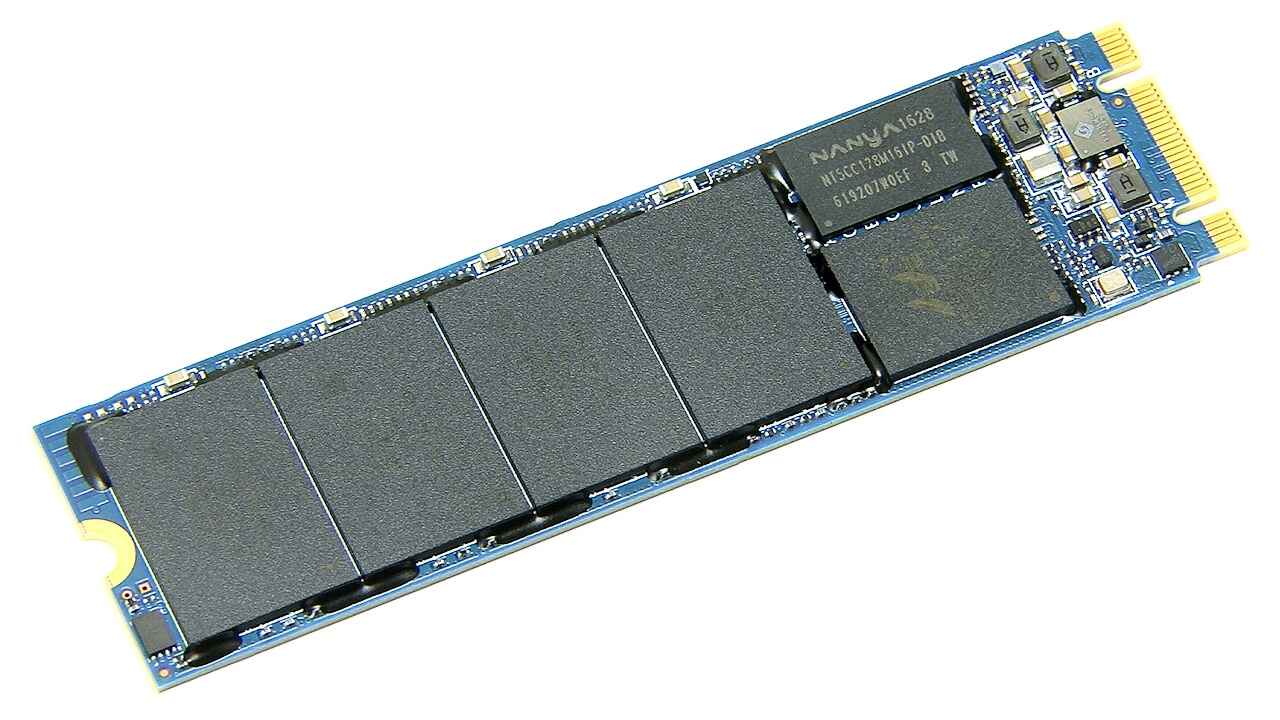Introduction
Welcome to this informative article that aims to shed light on the difference between an M.2 drive and a Solid State Drive (SSD). As technology continues to advance, new storage options have emerged to provide faster and more efficient data storage solutions. M.2 drives and SSDs are two popular choices in the market, but many people are still confused about their similarities and differences.
Both M.2 drives and SSDs offer significant improvements over traditional hard disk drives (HDDs) in terms of speed, reliability, and durability. They are both non-volatile storage options, meaning that data is not lost when power is disconnected. This makes them highly desirable for both personal and professional computing needs.
In this article, we will explore the characteristics, performance, and key differences between M.2 drives and SSDs. We will discuss their form factors and connectors, performance and speed capabilities, capacity options, pricing considerations, as well as compatibility and installation requirements.
By the end of this article, you will have a clear understanding of the strengths and weaknesses of both M.2 drives and SSDs, empowering you to make an informed decision when choosing the right storage solution for your needs.
What is an M.2 Drive?
An M.2 drive, also known as Next Generation Form Factor (NGFF) or M.2 SSD, is a high-speed, solid-state storage device that is widely used in modern computers and devices. It is named after the M.2 interface, which is a small, versatile form factor that allows for the integration of various storage and connectivity options.
M.2 drives utilize the Non-Volatile Memory Express (NVMe) protocol, which is specifically designed for SSDs to optimize speed and performance. This protocol allows for faster data transfer rates and reduced latency, resulting in quicker boot times and faster file access.
One of the key advantages of M.2 drives is their compact size. They are much smaller and lighter than traditional hard drives, making them ideal for ultra-slim laptops, tablets, and other portable devices. The small form factor of M.2 drives also enables easy installation and better airflow within the system, contributing to improved overall system performance and heat dissipation.
M.2 drives come in different lengths and widths, known as keying options, to accommodate various storage requirements and compatibility with different motherboards. The most common keying options are B key, M key, and B+M key. The keying determines the types of storage modules or connectors that can be supported by a particular M.2 slot.
When it comes to capacity, M.2 drives are available in a wide range of sizes, from 32GB up to multiple terabytes. This flexibility allows users to choose the right capacity that meets their specific storage needs, whether it’s for storing extensive multimedia files, running resource-intensive applications, or managing large-scale data sets.
In summary, an M.2 drive is a compact and high-performance storage solution that utilizes the M.2 interface and NVMe protocol. It offers significant advantages in terms of speed, size, and capacity options, making it an excellent choice for modern computing devices that require fast and reliable storage.
What is a Solid State Drive (SSD)?
A Solid State Drive (SSD) is a type of storage device that uses flash memory to store and retrieve data. Unlike traditional hard disk drives (HDDs) that rely on spinning platters and mechanical read/write heads, SSDs have no moving parts, which makes them faster, more durable, and less prone to mechanical failures.
The primary component of an SSD is NAND flash memory, a type of non-volatile storage that retains data even when the power is turned off. This allows SSDs to provide instant access to data, resulting in faster boot times, application loading, and file transfers compared to HDDs.
SSDs are available in various form factors, including the 2.5-inch SATA form factor, commonly used in laptops and desktop computers, and the smaller M.2 form factor, which is becoming increasingly popular in ultrabooks, tablets, and compact devices.
In terms of capacity, SSDs offer a wide range of options, starting from a few hundred gigabytes up to multiple terabytes. This allows users to choose the right capacity that suits their storage needs, whether it’s for personal data, gaming, or professional applications that require vast amounts of data storage.
One of the key advantages of SSDs is their speed. They are significantly faster than HDDs in terms of read and write speeds, which leads to faster overall system performance. SSDs excel in random read/write operations, making them particularly beneficial for tasks that involve accessing multiple files simultaneously or running resource-intensive applications.
Due to their lack of moving parts, SSDs are more resistant to shocks, vibrations, and temperature variations. This not only makes them more reliable but also extends their lifespan compared to HDDs. Additionally, the absence of spinning platters in SSDs results in quieter operation and lower power consumption, leading to improved energy efficiency.
In summary, a Solid State Drive (SSD) is a storage device that uses flash memory to provide fast, reliable, and durable data storage. With their high-speed performance, compact form factors, and various capacity options, SSDs have become the preferred choice for users seeking improved system responsiveness and storage efficiency in their computing devices.
Similarities between M.2 Drives and SSDs
Although M.2 drives and SSDs may have some differences in terms of physical form factors and connectors, they share several key similarities. These similarities contribute to their popularity as reliable and high-performance storage solutions:
- 1. Solid-State Technology: Both M.2 drives and SSDs are solid-state storage devices, meaning they do not have any moving parts. Unlike traditional hard disk drives (HDDs), which rely on spinning platters and mechanical read/write heads, solid-state storage offers faster data access and improved reliability.
- 2. Non-Volatile Memory: Both M.2 drives and SSDs utilize non-volatile memory, specifically NAND flash memory, to retain data even without a power source. This ensures that data is not lost when the system is powered off, making them ideal for both portable devices and desktop computers.
- 3. Faster Performance: M.2 drives and SSDs offer significantly faster performance compared to HDDs. They excel in both sequential read/write speeds and random read/write speeds, resulting in faster boot times, quicker application loading, and improved overall system responsiveness.
- 4. Reliability and Durability: With no moving parts, M.2 drives and SSDs are more resistant to mechanical failures caused by shocks, vibrations, and temperature variations. This makes them more reliable and durable compared to traditional HDDs.
- 5. Energy Efficiency: Both M.2 drives and SSDs consume less power than HDDs, leading to improved energy efficiency and longer battery life for portable devices. This is particularly beneficial for laptops, tablets, and other battery-powered devices.
Overall, the similarities between M.2 drives and SSDs lie in their solid-state technology, non-volatile memory, faster performance, reliability, durability, and energy efficiency. These shared characteristics make them highly desirable storage options for users seeking speed, reliability, and efficiency in their computing devices.
Differences between M.2 Drives and SSDs
While M.2 drives and SSDs share many similarities, there are also a few key differences that set them apart. These differences include:
- 1. Form Factors and Connectors: M.2 drives come in a smaller and more versatile form factor compared to traditional 2.5-inch SATA SSDs. M.2 drives are thin, rectangular-shaped cards that connect directly to the motherboard via an M.2 slot. On the other hand, SATA SSDs use a standard SATA connector and are typically installed in a 2.5-inch drive bay.
- 2. Performance and Speed: M.2 drives generally offer faster performance compared to SATA SSDs. M.2 drives utilize the NVMe protocol, specifically designed for SSDs, which allows for faster data transfer rates and reduced latency. This results in faster boot times, quicker file transfers, and improved overall system performance.
- 3. Capacity and Price: M.2 drives can offer higher capacities compared to SATA SSDs. M.2 drives are available in larger sizes, including multi-terabyte options, making them suitable for users who require extensive storage space. However, higher capacities may come at a premium price. SATA SSDs, while offering lower maximum capacities, tend to be more affordable when compared to their M.2 counterparts.
- 4. Compatibility and Installation: M.2 drives require a compatible M.2 slot on the motherboard for installation. M.2 slots can support different keying options, such as B key, M key, and B+M key, which determine the types of drives or modules that can be used. On the other hand, SATA SSDs can be easily installed in any system with a standard SATA interface.
- 5. Expandability and Future Proofing: M.2 drives, due to their compact form factor and support for PCIe interface, can offer greater future expandability for users. They can take advantage of faster transfer rates by upgrading to higher-performing M.2 drives in the future. Meanwhile, SATA SSDs may have limited expandability and performance potential.
These differences between M.2 drives and SSDs make them suitable for different use cases and user preferences. M.2 drives excel in terms of form factor versatility, speed, and future expandability, while SATA SSDs provide a more affordable and widely compatible storage option.
Form Factors and Connectors
Form factors and connectors play a crucial role in determining the compatibility and installation options for M.2 drives and SSDs. Understanding these aspects is essential when choosing the right storage solution for your specific needs.
M.2 Drive Form Factor: M.2 drives come in a small, thin, and rectangular-shaped form factor that allows for versatile installation in various devices. The length and width of M.2 drives can vary, typically ranging from 22mm to 110mm in length. The width is denoted by a number, such as 22mm or 80mm, representing the width in millimeters. This compact form factor makes M.2 drives ideal for ultrabooks, tablets, and other slim devices where space is limited.
SSD Form Factor: Traditional SSDs, such as the 2.5-inch SATA SSD, have a larger and rectangular form factor that is commonly used in laptops and desktops. The 2.5-inch form factor is designed to fit into standard drive bays and uses a standard SATA connector for data and power connections. This makes it compatible with a wide range of devices, including older computers.
M.2 Drive Connectors: M.2 drives connect directly to the motherboard via an M.2 slot. The M.2 slots on the motherboard can have different keying options, which determine the types of storage modules or connectors that can be used. Common keying options include B key, M key, and B+M key. B key supports SATA and PCIe x2 connections, while M key supports PCIe x4 connections. B+M key slots can support both SATA and PCIe x2 or x4 connections.
SSD Connectors: SATA SSDs use a standard SATA connector for both data and power connections. This connector is widely supported in desktop and laptop motherboards and can also be used with SATA cables for external storage solutions.
It’s important to note that M.2 drives and SSDs may not be compatible with all devices or motherboards. Checking the specifications of your device or motherboard is crucial to ensure it supports the specific form factor and connector type you intend to use.
In summary, M.2 drives have a small and versatile form factor that connects directly to the motherboard via M.2 slots, while traditional SSDs use a larger 2.5-inch form factor and standard SATA connectors. Understanding the form factor and connectors will help you determine the compatibility and installation options for your chosen storage solution.
Performance and Speed
When it comes to performance and speed, both M.2 drives and SSDs offer significant advantages over traditional hard disk drives (HDDs). However, there are some differences in terms of their speed capabilities and performance characteristics.
M.2 Drive Performance: M.2 drives generally provide faster performance compared to SSDs due to their use of the NVMe (Non-Volatile Memory Express) protocol. NVMe is specifically designed for SSDs and offers higher transfer rates and reduced latency. This results in faster overall system performance, quicker boot times, and enhanced responsiveness when loading applications and accessing files.
SSD Performance: SATA SSDs, while not as fast as M.2 drives, still offer significant performance improvements over HDDs. They provide faster data transfer rates, improved system responsiveness, and quicker application loading times. SATA SSDs are a popular choice for users who prioritize a balance between performance and affordability.
Sequential Read and Write Speeds: When it comes to sequential read and write speeds, M.2 drives typically outperform SATA SSDs. M.2 drives can achieve significantly higher read and write speeds, allowing for faster file transfers and improved performance in tasks that involve large files or data sets.
Random Read and Write Speeds: M.2 drives and SSDs both excel in random read and write operations, which are important for tasks such as running multiple applications simultaneously or accessing small-sized files. The absence of mechanical components in both M.2 drives and SSDs enables them to quickly retrieve data from different locations on the storage medium, resulting in smoother multitasking and better performance in demanding workloads.
While M.2 drives generally offer higher performance and faster speeds compared to SATA SSDs, it’s important to note that the actual performance may vary depending on the specific model, capacity, and other factors. It’s recommended to review the manufacturer’s specifications and consider your specific needs and usage patterns when choosing between M.2 drives and SSDs.
In summary, both M.2 drives and SSDs provide superior performance and speed compared to traditional HDDs. M.2 drives, with the NVMe protocol, generally offer faster overall performance and higher transfer rates compared to SATA SSDs. However, SATA SSDs still offer significant performance improvements over HDDs and are a more affordable option for users who value a balance between performance and cost.
Capacity and Price
Capacity and price are important factors to consider when choosing between M.2 drives and SSDs. While both storage options offer a range of capacities to suit various needs, there are differences in terms of maximum capacity and price per gigabyte.
M.2 Drive Capacity: M.2 drives are available in a wide range of capacities, starting from as low as 32GB and going up to several terabytes. This allows users to choose a capacity that is appropriate for their storage requirements. M.2 drives with higher capacities are often favored by professionals who work with large multimedia files, run resource-intensive applications, or require extensive data storage.
SSD Capacity: SATA SSDs also offer a range of capacities, but their maximum capacity is generally lower compared to M.2 drives. SATA SSDs typically start at around 120GB and can go up to several terabytes, depending on the manufacturer and model. While SATA SSDs may not have the same maximum capacity as M.2 drives, they still provide ample storage for most users’ needs.
Price: When it comes to price, SATA SSDs are generally more affordable when compared to M.2 drives. The cost per gigabyte of storage is typically lower for SATA SSDs, making them a cost-effective choice for users who prioritize budget-friendly options. On the other hand, the higher performance and faster speeds of M.2 drives often come at a premium price. Users who require the fastest storage solution may be willing to invest more in an M.2 drive.
It’s important to note that prices for both M.2 drives and SSDs can vary based on factors such as capacity, brand, and technology used. Additionally, prices may fluctuate over time due to market trends and advancements in technology. It’s always recommended to compare prices and consider your specific needs and budget when making a purchasing decision.
In summary, both M.2 drives and SSDs offer a range of capacities to meet varying storage needs. M.2 drives tend to have higher maximum capacities, making them suitable for users who require extensive storage space. SATA SSDs, on the other hand, are more affordable and provide ample storage for most users. Balancing capacity requirements and budget considerations is crucial when choosing between M.2 drives and SSDs.
Compatibility and Installation
Compatibility and installation are important factors to consider when choosing between M.2 drives and SSDs. Understanding the requirements and limitations of each storage option can help ensure a smooth and hassle-free installation process.
M.2 Drive Compatibility and Installation: M.2 drives require a compatible M.2 slot on the motherboard for installation. M.2 slots are available in different lengths, typically ranging from 22mm to 110mm. It is essential to check the specifications of your motherboard to ensure it has an appropriate M.2 slot that supports the desired keying option (such as B key or M key) for the M.2 drive you plan to install. Additionally, some devices may have specific M.2 slots reserved for certain functions, such as Wi-Fi cards. Therefore, it’s important to consider any limitations or conflicts that may arise when installing an M.2 drive in your system.
SSD Compatibility and Installation: SATA SSDs, being a more commonly used storage option, offer broader compatibility with a wide range of motherboards and systems. They use the standard SATA connectors, which are widely supported in desktop and laptop computers. Installing a SATA SSD generally involves connecting the SATA data cable and SATA power cable to the drive and the motherboard or power supply, respectively. SATA SSDs can be easily installed in any system that has an available SATA interface.
When it comes to installation, it is important to follow the manufacturer’s instructions and guidelines. Proper installation ensures smooth data transfer and optimal performance. If you are not confident in installing the storage device yourself, it is recommended to seek professional assistance or guidance.
It’s also worth noting that the installation options may vary depending on the specific model and brand of the motherboard or device. Some motherboards may offer multiple M.2 slots, allowing for the installation of multiple M.2 drives, while others may have limited slots or share bandwidth with other components.
In summary, M.2 drives require specific M.2 slots on the motherboard for installation and have compatibility considerations regarding length and keying options. SATA SSDs, on the other hand, offer broader compatibility with standard SATA connectors. Understanding the compatibility requirements and following proper installation procedures are essential for ensuring a successful and hassle-free installation of M.2 drives or SSDs.
Conclusion
Choosing between an M.2 drive and a Solid State Drive (SSD) depends on your specific needs and preferences. Both storage options offer significant improvements over traditional hard disk drives (HDDs) in terms of speed, reliability, and durability.
M.2 drives and SSDs share several similarities, including their solid-state technology, non-volatile memory, faster performance, reliability, durability, and energy efficiency. They both provide faster boot times, quicker application loading, and improved overall system responsiveness compared to HDDs.
However, there are important differences to consider. M.2 drives offer a smaller and more versatile form factor, faster performance with the NVMe protocol, and the potential for higher capacities. They are particularly suitable for users who prioritize speed and future expandability, such as gamers, multimedia professionals, and enthusiasts.
On the other hand, SSDs, such as traditional 2.5-inch SATA SSDs, provide a more affordable storage option with broader compatibility and ease of installation. They offer significant performance improvements over HDDs and are suitable for a wide range of users, including casual users, students, and those on a budget.
It’s important to carefully consider factors such as form factor, performance, capacity requirements, price, compatibility, and installation options when making your decision. Assess your specific needs, consider your budget, and determine whether the higher performance and potential future expandability of an M.2 drive justify the additional cost.
In conclusion, both M.2 drives and SSDs are excellent choices for modern computing, with their superior speed, reliability, and durability compared to traditional HDDs. Whether you opt for the compact and high-performance M.2 drive or the more affordable and widely supported SSD, either option will significantly enhance your computing experience and provide you with fast and reliable storage for your data and applications.







